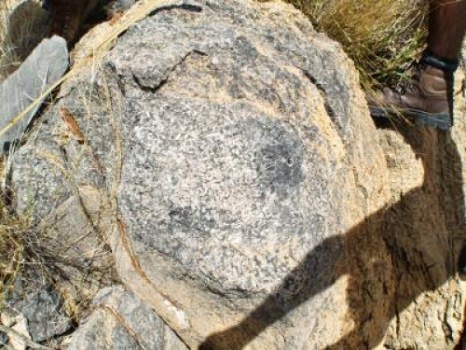
It is a remarkable survivor of an ancient aquatic world — now a new study sheds light on how one of Earth’s oldest reefs was formed.
Researchers have discovered that one of these reefs — now located on dry land in Namibia — was built almost 550 million years ago, by the first animals to have hard shells.
Scientists say it was at this point that tiny aquatic creatures developed the ability to construct hard protective coats and build reefs to shelter and protect them in an increasingly dangerous world.
They were the first animals to build structures similar to non-living reefs, which are created through the natural processes of erosion and sediment deposition.
The study reveals that the animals attached themselves to fixed surfaces — and to each other — by producing natural cement composed of calcium carbonate, to form rigid structures.
The creatures — known as Cloudina — built reefs in ancient seas that now form part of Namibia. Their fossilised remains are the oldest reefs of their type in the world.
Cloudina were tiny, filter-feeding creatures that lived on the seabed during the Ediacaran Period, which ended 541 million years ago. Fossil evidence indicates that animals had soft bodies until the emergence of Cloudina.
Findings from the study — led by scientists at the University of Edinburgh — support previous research which suggested that environmental pressures caused species to develop new features and behaviours in order to survive.
Researchers say animals may have developed the ability to build reefs to protect themselves against increased threats from predators. Reefs also provided access to nutrient-rich currents at a time when there was growing competition for food and living space.
Scientists say the development of hard biological structures — through a process called biomineralisation — sparked a dramatic increase in the biodiversity of marine ecosystems.
The study, published in the journal Science, was carried out in collaboration with University College London and the Geological Survey of Namibia. The work was supported by the Natural Environment Research Council, the University of Edinburgh and the Laidlaw Trust.
Professor Rachel Wood, Professor of Carbonate GeoScience at the University of Edinburgh, who led the study, said: “Modern reefs are major centres of biodiversity with sophisticated ecosystems. Animals like corals build reefs to defend against predators and competitors. We have found that animals were building reefs even before the evolution of complex animal life, suggesting that there must have been selective pressures in the Precambrian Period that we have yet to understand.”
Note : The above story is based on materials provided by University of Edinburgh.










